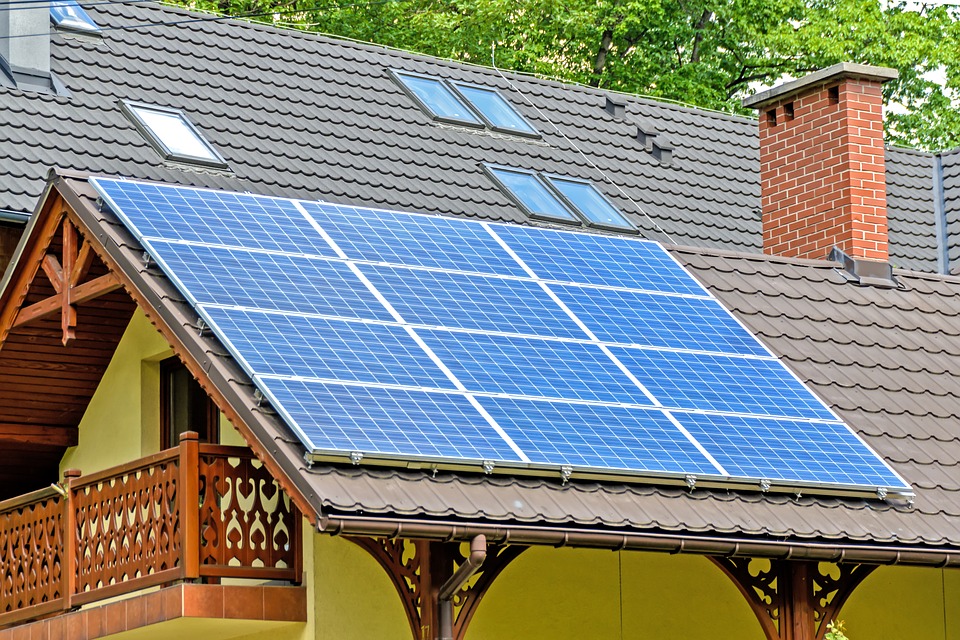
Solar Panels are also known as solar module, photovoltaic module, or photovoltaic panel. It is used to convert a sun light, which is composed of particles of energy called “photons” into an electricity that can be used to generate and supply electricity in commercial and residential applications.
You can do this at home even – create own electricity from home by building wind & solar panels.
Solar Panel History
It was in 1767 when a Swiss scientist first created a solar collector. Horace – Benedict de Saussure made an insulated box covered with three layers of glass to absorb heat energy. Since then, his work has become popular. During the 1800s another revision was made by a French scientist named Edmond Becquerel. He created a photovoltaic effect by using two electrodes placed in an electrolyte. It created a tremendous increase in electricity after exposure to the light.
Various studies have been made to fully enhance the power of solar panel. On 1893, Charles Fritts invented the first genuine solar energy cell which was formed by coating sheets of selenium with a thin layer of gold. The advancement of technology has lead to more inventions of solar panels. Today, they are not only used in calculators and other small lighting fixtures. In fact, they are now being used for DIY installation on homes, portable panels for hikers and campers, lamp posts and spot lights for commercial use. Other domestic application for solar panels are lighting, garden fixtures, pool and hot water heating systems, home heating and electrical supply.
Solar Panel Benefits
The main advantage of investing a solar panel is it becomes potentially less expensive in the long run. By using solar panels, you will realize the savings you could make over the coming months or years on your electricity bill. A PV system is very easy to maintain because there are no moving parts. The initial cost for solar panels may be a bit costly for you but when you get a solar proposal for your home, you will realize that the twenty years of monthly savings will go beyond the original investment.
The use of solar panels does not just help you save money for your own, but it also helps the environment. Solar panels offer an overwhelming positive environmental impact simply by eliminating the use of too much fossil fuels and carbon dioxide on earth. Electricity is an integral part of the human lives, making it the primary contributor to global warming. Fossil fuels, coals, gas and oil are burned for energy. Burning fossil fuels releases toxic emissions such as nitrogen oxide, sulfur oxide, and heavy metals like mercury can greatly contribute to global warming. Solar energy is renewable energy and helps eliminate the use of toxic materials for energy.
How Solar Panels Work
We often hear the term solar panel or even see them in various places but have you ever wondered how this thing harvest light from the sun and convert it into electrical energy? Solar panels are composed of different individual solar cells. These cells are made up of layers of silicon, phosphorous (n-type), and boron (p-type). The phosphorous provides the negative charge while the boron provides the positive charge. When the solar panels are directed to the sunlight, it easily absorbs the photons an initiate an electric current. The reaction of photons on the surface of the solar panel produces energy which allows electrons to be knocked out of their atomic orbits and released into the electric field generated by solar cells which then pull these free electrons into a directional current.
Types of Solar Panels
Basically, there are various types of solar panels offered in the market. Whether you are looking for a high efficiency, commercial grade, or the one that uses latest technology, these solar panels will surely help reduce your bills.
Monocrystalline Solar Panels
This type of solar panels is often characterized by its square-ish cells. Monocrystalline solar panels are made of thin silicon sliced from large crystals. Metal strips are laid over the entire cell and act as a conductor that captures electrons. This type of solar panel is widely known to be the most efficient, which means you will obtain more electricity from a given area of the panel, but is also considered as the most expensive. The process of recrystallising the cells is costly and intensive, making the production cost very high.
Polycrystalline Solar Panels
Polycrystalline or multicrystalline are made up of different crystals, merged together to achieve a single cell. This type of panel is quite popular for many residential areas as it is cheaper than the other types of solar panel. They have lower silicon levels which are also slightly less efficient than the mono panel that is why they are cheaper.
Amporphous Solar Panels
Amporphous solar panels or the thin film are entirely different than the crystalline. This type of solar panel didn’t undergo the process of molding, drawing or slicing crystalline silicon. Some kinds of thin film uses other semiconductor materials like copper indium diselenide (CIS) and cadmium telluride (CdTe). Amporphous silicon is usually easy to produce and its processes are not as complex as the crystalline, so they have less expensive prices. Thin films are commonly used in many roofs because they are very flexible, easily curved to bend in a roof or attached to a flexible backing sheet so that they can rolled up and put away when they are not needed. It’s main drawback is its inefficiency compared to other types of solar panels.